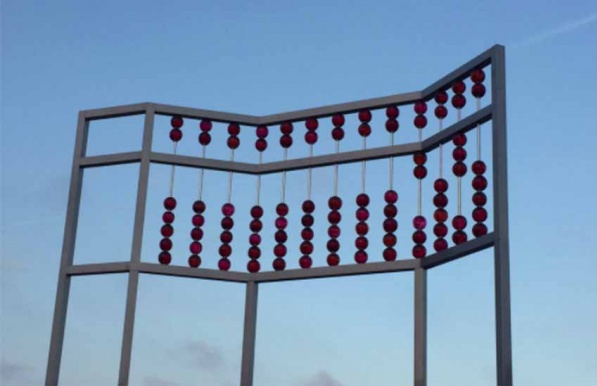
|
Amsterdam Netherlands |
De Ruyterkade t/o 113 | HIV/AIDSmonument Netherlands |
since 1 December 2016 without names |
The Dutch Capital is now counting the days until HIV and AIDS have left our world for good
Amsterdam’s new HIV/AIDS monument is counting down to a world free of the virus.
Just in time for World AIDS Day on 1 December, the city’s mayor, Eberhard van der Laan, unveiled the seven meter tall sculpture called ‘Living by Numbers’.
Designed by openly gay French artist Jean-Michel Othoniel, the AIDSmonument resembles an abacus which counts ‘down the moment that AIDS has left our world for good’.
Large, hand-blown scarlet beads don’t just count down, but will reflect light from where it sits on the south bank of the river IJ, between Amsterdam Centraal Station and the Muziekgebouw aan ‘t IJ concert hall.
As a ‘beacon of hope and support to anyone living with HIV’, the monument is also supposed to be ‘a tribute to all buddies, supporters, medical employees, activists and scientists’ and everyone who has died of AIDS.
It also steadily looks towards the future: every year, in a ceremony, the beads will be adjusted to reflect the changes in numbers – whether new infections have gone down, or, if a cure becomes available, the number of people who have been cured.
And the location hasn’t been chosen at random, either.
On one hand, the river IJ’s bank was chosen to reflect the international dimensions of HIV and AIDS by linking it to the river’s rich trade history.
On the other hand the area around the monument, called De Ruyterkade, also has a rich gay history.
The eastern side of the quay was a popular car-cruising area for gay men.
At the same time, De Ruyterkade 110 was home to the Café West-Indië, which in turn was the meeting point of Motor Sportclub Amsterdam, a motorclub especially for gay people.
Today, the area is popular with tourists and locals, and the AIDSmonument will be seen by hundreds of people every day.
But besides hosting ceremonies, it’s also supposed to be an intimate place, for individual people to remember.
For this, Othoniel has installed a bench, right underneath the abacus, where people can sit, gaze across the river and find the courage to go on.
Photo © Maike Senders Twitter GayStarNews
2 December 2016
Stefanie Gerdes, Amsterdam










































































